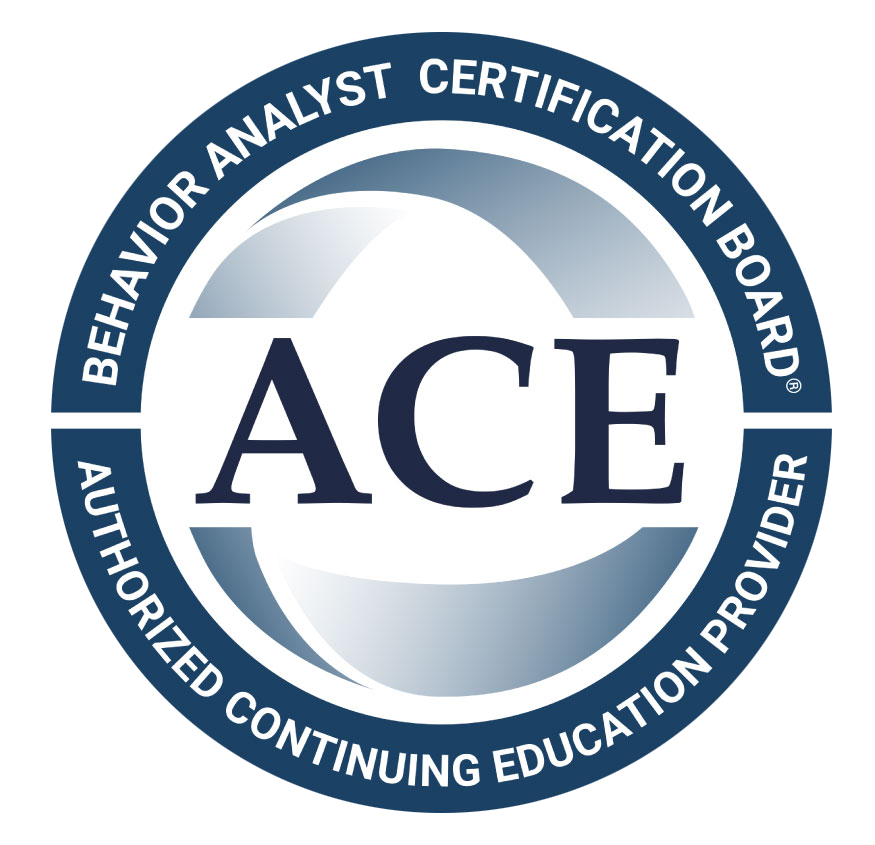Understanding Comorbidity
Definition of Comorbidity
Comorbidity refers to the presence of two or more disorders or illnesses occurring in the same person. These conditions can occur simultaneously or sequentially. In the context of autism and ADHD, comorbidity means that an individual is diagnosed with both Autism Spectrum Disorder (ASD) and Attention Deficit/Hyperactivity Disorder (ADHD). This overlap can complicate diagnosis and treatment, as the symptoms of one condition may mask or mimic those of the other.
Prevalence Rates
The comorbidity between autism and ADHD is notably high.
Research indicates that 30-50% of children with autism also have co-occurring ADHD. Conversely, up to 25% of children diagnosed with ADHD also meet the criteria for autism. This overlap is more prevalent in younger children.
| Condition | Prevalence Rate |
|---|---|
| Children with Autism and ADHD | 30-50% |
| Children with ADHD and Autism | Up to 25% |
Further studies have shown varying prevalence rates. For instance, the Journal of the American Academy of Child & Adolescent Psychiatry reports that ADHD is present in 30-80% of individuals with ASD, while ASD is present in 20-50% of individuals with ADHD. Another study by Autistica found that approximately 21% of children with ADHD are also autistic, and around 28% of autistic children meet the criteria for ADHD.
| Study | ADHD in ASD | ASD in ADHD |
|---|---|---|
| Journal of the American Academy of Child & Adolescent Psychiatry | 30-80% | 20-50% |
| Autistica | 21% | 28% |
Understanding the prevalence rates of autism and ADHD comorbidity is crucial for accurate diagnosis and effective treatment. For more information on related conditions, visit our articles on autism and OCD comorbidity and common comorbidities with autism.
Misdiagnosis and Overlap
Understanding the nuances between autism and ADHD is crucial, especially given the high rate of comorbidity between the two conditions. Misdiagnosis can occur due to overlapping symptoms, leading to challenges in providing appropriate treatment.
Misdiagnosis of ADHD as Autism
Children with ADHD may sometimes be misdiagnosed with autism due to the presence of overlapping symptoms such as difficulty with social interaction and communication. The misdiagnosis rate of ADHD as autism ranges from 10-20%. This misdiagnosis can occur because both conditions share traits like impulsivity, inattention, and hyperactivity.
| Symptom | ADHD | Autism |
|---|---|---|
| Inattention | Yes | Sometimes |
| Hyperactivity | Yes | Sometimes |
| Social Interaction Difficulties | Sometimes | Yes |
| Communication Challenges | Sometimes | Yes |
Misdiagnosis of Autism as ADHD
Conversely, autism can be misdiagnosed as ADHD, particularly when an individual presents with traits of both disorders. Studies indicate that 30-40% of children initially diagnosed with ADHD are later found to have autism. This misdiagnosis can occur when clinicians focus primarily on symptoms associated with ADHD, such as hyperactivity and inattention, without fully considering the broader range of autism-related behaviors.
| Symptom | ADHD | Autism |
|---|---|---|
| Repetitive Behaviors | No | Yes |
| Restricted Interests | No | Yes |
| Sensory Sensitivities | Sometimes | Yes |
| Difficulty to Change | Sometimes | Yes |
The high rate of comorbidity between autism and ADHD underscores the importance of accurate diagnosis. According to a study published by the Journal of the American Academy of Child & Adolescent Psychiatry, ADHD is present in 30-80% of individuals with autism, and autism is present in 20-50% of individuals with ADHD. This highlights the need for comprehensive evaluations to ensure that both conditions are appropriately identified and managed.
For more information on related comorbidities, you can explore our articles on autism and OCD comorbidity, common comorbidities with autism, autism and intellectual disability comorbidity, and autism and epilepsy comorbidity.
Treatment Approaches
When addressing the comorbidity of autism and ADHD, a multifaceted treatment approach is often necessary. This section explores two primary treatment methods: Applied Behavior Analysis (ABA) therapy and a combination of medication and behavioral therapy.
Applied Behavior Analysis (ABA) Therapy
Applied Behavior Analysis (ABA) therapy is a widely recognized and effective treatment for individuals with comorbid autism and ADHD. ABA therapy focuses on teaching skills through positive reinforcement and shaping behaviors. This method involves breaking down complex tasks into smaller, manageable steps and reinforcing desired behaviors with rewards.
ABA therapy can help individuals develop essential skills such as communication, social interaction, and daily living activities. By using data-driven techniques, therapists can tailor interventions to meet the unique needs of each individual, ensuring that progress is monitored and adjustments are made as necessary.
Medication and Behavioral Therapy
A comprehensive treatment plan for autism and ADHD comorbidity often includes a combination of medication and behavioral therapy. This approach addresses the core symptoms of both disorders and provides a holistic strategy for managing the challenges associated with comorbidity.
Medication
Pharmacological treatment for ADHD is effective in reducing core ADHD symptoms. Stimulant medications, such as methylphenidate and amphetamines, are commonly prescribed to help manage symptoms of inattention, hyperactivity, and impulsivity. However, stimulant medications have shown conflicting findings in cases of co-occurring ADHD and ASD, with lower response rates compared to ADHD alone.
Nonstimulant medications, such as atomoxetine, have demonstrated better tolerability and positive effects in reducing hyperactivity and impulsivity in individuals with co-occurring ADHD and ASD. Guanfacine, another medication, has shown positive effects in reducing hyperactivity and inattention among children with ASD who are higher cognitively functioning.
| Medication Type | Effectiveness | Tolerability |
|---|---|---|
| Stimulants | Effective for ADHD symptoms | Lower response rates in ASD |
| Atomoxetine | Reduces hyperactivity and impulsivity | Better tolerability |
| Guanfacine | Reduces hyperactivity and inattention | Positive effects in higher functioning ASD |
Behavioral Therapy
Behavioral therapy is an essential component of treatment for individuals with autism and ADHD comorbidity. This therapy focuses on modifying behaviors, improving social skills, and enhancing communication abilities. Techniques such as cognitive-behavioral therapy (CBT) can help individuals develop coping strategies, manage anxiety, and improve executive functioning.
Combining pharmacological and psychosocial treatments may be effective for symptom management. However, psychosocial interventions specifically targeting both disorders are limited, and further research is needed to determine the most effective treatments for co-occurring symptoms.
Shared Traits and Differences
Common Traits in ADHD and Autism
Autism Spectrum Disorder (ASD) and Attention Deficit Hyperactivity Disorder (ADHD) share several common traits, which can sometimes make diagnosis challenging. Both conditions involve difficulties with attention, activity levels, and impulsive behavior. Individuals with either condition may struggle to maintain focus, exhibit hyperactive behavior, and act impulsively.
| Trait | ADHD | Autism |
|---|---|---|
| Attention Difficulties | Yes | Yes |
| Hyperactivity | Yes | Sometimes |
| Impulsivity | Yes | Sometimes |
| Social Challenges | Sometimes | Yes |
| Need for Routine | No | Yes |
Contrasting Characteristics
Despite the shared traits, there are distinct differences between ADHD and autism. These differences can help in distinguishing between the two conditions and understanding the unique challenges faced by individuals with comorbidity.
- Attention and Focus: People with ASD often have stronger sustained and focused attention compared to those with ADHD. However, they may struggle with orienting attention toward non-social stimuli and disengaging attention in certain settings.
- Activity Levels: Individuals with ADHD typically exhibit higher levels of hyperactivity and impulsivity. In contrast, those with autism may seek routine and predictability, showing less interest in novelty and change.
- Social Interaction: Social challenges are more pronounced in autism. People with ASD may have difficulty with joint attention and social communication, whereas these issues are less central in ADHD.
- Behavioral Traits: ADHD individuals may crave novelty and exhibit impulsive behavior, while autistic individuals often seek routine and similarity. This can create an internal struggle for those with both conditions.
| Characteristic | ADHD | Autism |
|---|---|---|
| Craving Novelty | Yes | No |
| Seeking Routine | No | Yes |
| Social Communication | Sometimes | Yes |
| Joint Attention | Yes | Yes |
| Impulsivity | No | Sometimes |
Genetic and Neurobiological Factors
Genetic Overlap
Research has shown that there is a significant genetic overlap between Autism Spectrum Disorder (ASD) and Attention Deficit Hyperactivity Disorder (ADHD). Genome-wide studies have identified that many genetic copy number variants (CNVs) confer risks for both ADHD and ASD, indicating shared genetic components between the two disorders. This genetic overlap suggests that individuals with ASD and ADHD may share common genetic vulnerabilities.
The genetic heterogeneity in ASD involves both locus and allelic heterogeneity, meaning that different genetic mutations can lead to similar clinical presentations. This complexity adds to the challenge of understanding the genetic basis of ASD and its comorbidity with ADHD.
Neuroimaging Findings
Advances in neuroimaging techniques have provided valuable insights into the neurobiological underpinnings of ASD and ADHD comorbidity. Studies have revealed that ASD is associated with synaptic deficits in specific brain networks, affecting anatomical microstructures and local neural circuitry. These deficits can lead to differences in cortical thickness and surface area in various brain regions compared to healthy controls.
| Brain Region | ASD | ADHD | Shared |
|---|---|---|---|
| Amygdala | Dysfunctional | Normal | Yes |
| Prefrontal Cortex | Affected | Affected | Yes |
| Nucleus Accumbens | Affected | Normal | Yes |
The amygdala, prefrontal cortex, and nucleus accumbens in the basal forebrain are particularly implicated in the neurobiology of ASD. Dysfunctional amygdala activity in individuals with ASD has been associated with abnormal face processing, slower response times, and increased amygdala activation with repeated exposure, contributing to social communication difficulties.
Physiopathologic studies have shown that ASD-ADHD comorbidity does not correspond to a mere combination of both disorders but is neurofunctionally distinct. Imaging and EEG data have revealed anomalies shared by non-control groups, in addition to distinct features unique to each group. The comorbid group presented unique and more severe impairments affecting specific brain regions.
Children with ASD are affected more by heightened attentional abilities than by a primary attention deficit. The attentional trait observed in ASD should be included in the clinical definition and description of ASD. The attentional characteristics of disorders challenge the validity of polythetic diagnoses in psychiatry, and further description of these characteristics is necessary.
Understanding the genetic and neurobiological factors underlying ASD and ADHD comorbidity is crucial for developing effective treatment approaches.
Implications and Challenges
Impact on Daily Functioning
Individuals with both Autism Spectrum Disorder (ASD) and Attention Deficit Hyperactivity Disorder (ADHD) often face significant challenges in their daily lives. The presence of both conditions can lead to more severe impairments compared to those with only one disorder. These individuals may experience greater difficulty in managing daily situations and higher levels of additional psychopathology.
Over one third of children with ASD exhibit some comorbid ADHD symptoms, which are linked to greater problems in adaptive skills and a poorer overall quality of life. Primary care providers should screen for ADHD symptoms in their patients with ASD and consider these symptoms when developing a care plan.
Treatment Challenges
Treating individuals with both ASD and ADHD presents unique challenges. Co-occurring ADHD and ASD may be less responsive to standard treatments for either disorder than individuals with "pure" forms of the disorders. This necessitates a more tailored approach to treatment that addresses the complexities of both conditions.
| Treatment Approach | Challenges |
|---|---|
| Applied Behavior Analysis (ABA) Therapy | May need modifications to address ADHD symptoms |
| Medication | Finding the right balance to manage both ASD and ADHD symptoms |
| Behavioral Therapy | Requires strategies that cater to the combined symptoms of both disorders |
The presence of both conditions can complicate the effectiveness of treatments. For example, medications that are effective for ADHD may not address the core symptoms of ASD, and vice versa. This can lead to a trial-and-error approach in finding the right combination of therapies and medications.
Additionally, the genetic overlap between ASD and ADHD suggests that there may be shared genetic risk factors contributing to the co-occurrence of these disorders. Studies like the New Jersey Language and Autism Genetics Study (NJLAGS) have identified significant associations with ADHD on chromosomes 12 and 17, and genes such as KDM6B, which is known as a risk gene for neurodevelopmental disorders like ASD and ADHD.
Final Thoughts
Understanding the complexities of autism and ADHD comorbidity is essential for accurate diagnosis and effective treatment. With overlapping symptoms and unique challenges, a tailored approach—combining ABA therapy, behavioral strategies, and, in some cases, medication—can make a significant difference.
If you're seeking expert guidance and personalized support for your child, Connect n Care is here to help. Contact us today to learn more about our ABA therapy services and how we can support your child’s unique needs.
Sources:
- https://pmc.ncbi.nlm.nih.gov/articles/PMC8918663/
- https://www.autistica.org.uk/what-is-autism/adhd-and-autism
- https://www.autismparentingmagazine.com/learn-autism-differences/
- https://pmc.ncbi.nlm.nih.gov/articles/PMC3441928/
- https://www.nature.com/articles/mp201717









